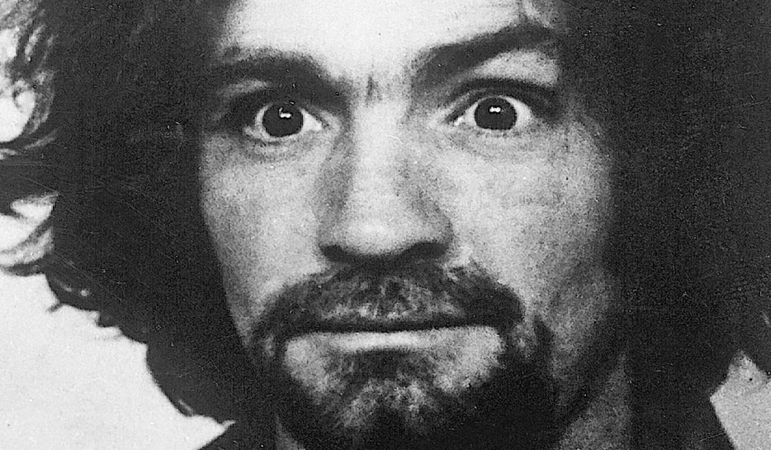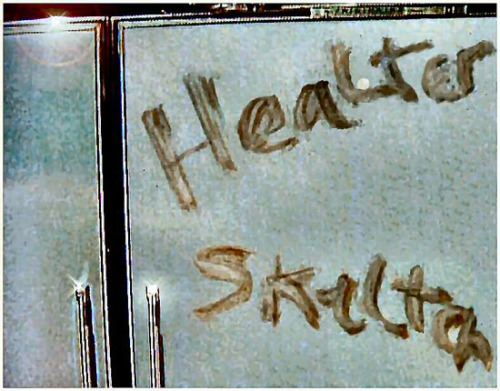Excerpted from
The Crime Buff’s Guide to Outlaw Los Angeles
(2017, WildBluePress)
Every generation has its bogeyman.
Before 1969, maybe it was Adolf Hitler. After 2001, Osama bin Laden. But for those 30 or so years in between it was unquestionably an aspiring musician, deeply damaged outlaw, and hippie Svengali named Charles Manson.
 On two nights in the summer of 1969—the same summer as Woodstock—Manson rose from nobody to America’s most fearsome monster.
On two nights in the summer of 1969—the same summer as Woodstock—Manson rose from nobody to America’s most fearsome monster.
Born in Ohio to an unwed, 15-year-old girl, Manson’s childhood was poor and troubled, to say the least. When he was five, his mom went to prison for armed robbery. Although he was smart, he never learned to read or write well, so he dropped out of third grade. By age 13, Charlie was doing his own armed robberies and his recently paroled mother reportedly sold him for a bottle of vodka.
The kid grew accustomed to life in brutal reformatories where he spent much of his youth. He became skilled at rape, contraband, and manipulation. He began to grasp the power that acting crazy had over people.
As an adult, he indulged his most primitive urges, too. He married and moved to California, but didn’t want to work. When his wife got pregnant, Charlie got serious about his responsibility: He became a pimp and part-time thief to pay the bills. Busted for forging a US Treasury check, Manson went to prison for six years and was released in 1967, just in time for the “summer of love,” when social, racial, and political turbulence had knocked loose a million rootless kids, all looking for meaning. Or something. Or anything.
Fate had dropped the utterly wrong man into the utterly wrong place and moment in time. He brilliantly exploited sex, drugs, and rock ’n’ roll—and rampant disaffection with the mainstream—to his own narcissistic ends. He recast himself as a crazy charmer, a cosmic seducer, a pusher of consciousness, a freak-riffing messiah who spoke in wacky riddles. He was Canoga Park Jesus, and his disciples were a ragged, dirty band of alienated hippie kids.

Recent mug shot
We know what happened in August 1969. Those bloody nights transformed a young, pregnant actress named Sharon Tate into America’s most famous mass-murder victim, more famous than she’d gotten in her recent role in the movie Valley of the Dolls. They scared the bejeezus out of a million parents who feared that free love, acid, long hair, and rock music might be the Four Horsemen of the Apocalypse.
In these past five decades, more than 30 books, a dozen movies, at least one stage play, and countless songs have paid homage to Manson, as if he were some underdog folk-hero. He is ad-libbing a cautionary tale about sex, drugs, mind-control, religion, celebrity, rock ‘n’ roll … and just how little control we have over any of it. He remains the perfect reality TV star in the greatest drama of all: life and death.
Oh, we’ve seen other charming and persuasive psychopaths, but none held a mirror up to us like Manson. In this little troll, we saw (and still see) the darkest side of what’s possible when we veer off the path—especially those of us who are young, suburban women from good homes.
Manson’s enigma keeps him alive in our consciousness and, to a certain degree, in our prison. His ambiguity and his uncanny freak-riffing fascinate us. Until he has literally taken his last breath, the bogeyman will have the last laugh.
Want to read more about the
freaky, creepy history of Los Angeles crime?
Click here.

